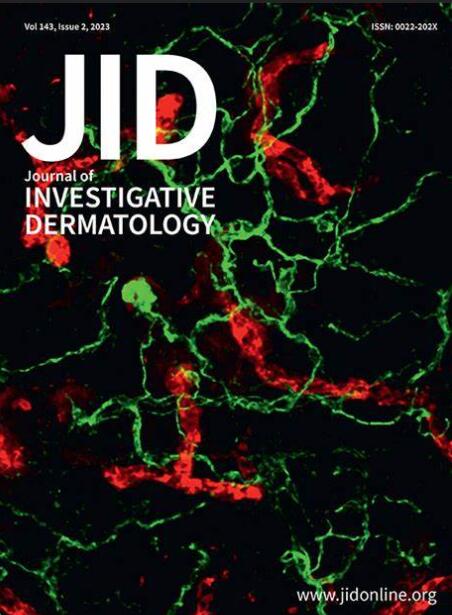Deciphering the Dysregulating IGF-1–SP1–CD248 Pathway in Fibroblast Functionality during Diabetic Wound Healing
IF 5.7
2区 医学
Q1 DERMATOLOGY
引用次数: 0
Abstract
Reduced fibroblast activity is a critical factor in the progression of diabetic ulcers. CD248, a transmembrane glycoprotein prominently expressed in activated fibroblasts, plays a pivotal role in wound healing. However, the role of CD248 in diabetic wound healing and the CD248 regulatory pathway remains largely unexplored. Our study shows that CD248 expression is significantly reduced in skin wounds from both patients and mice with diabetes. Single-cell transcriptome data analyses reveal a marked reduction of CD248-enriched secretory-reticular fibroblasts in diabetic wounds. We identify IGF-1 as a key regulator of CD248 expression through the protein kinase B/mTOR signaling pathway and the SP1 transcription factor. Overexpression of CD248 enhances fibroblast motility, elucidating the under-representation of CD248-enriched fibroblasts in diabetic wounds. Immunohistochemical staining of diabetic wound samples further confirms low SP1 expression and fewer CD248-positive secretory-reticular fibroblasts. Further investigation reveals that elevated TNFα levels in diabetic environment promotes IGF-1 resistance, and inhibiting IGF-1 induced CD248 expression. In summary, our findings underscore the critical role of the IGF1–SP1–CD248 axis in activating reticular fibroblasts during wound-healing processes. Targeting this axis in fibroblasts could help develop a therapeutic regimen for diabetic ulcers.
解密糖尿病伤口愈合过程中成纤维细胞功能失调的 IGF-1-SP1-CD248 通路
成纤维细胞活性降低是糖尿病溃疡恶化的一个关键因素。CD248是一种跨膜糖蛋白,在活化的成纤维细胞中表达显著,在伤口愈合中起着关键作用。然而,CD248 在糖尿病伤口愈合中的作用以及 CD248 的调控途径在很大程度上仍未被探索。我们的研究表明,在糖尿病患者和小鼠的皮肤伤口中,CD248 的表达都明显减少。单细胞转录组数据分析显示,糖尿病伤口中富含 CD248 的分泌网状成纤维细胞明显减少。我们发现胰岛素样生长因子-1(IGF-1)通过 Akt/mTOR 信号通路和 Sp1 转录因子是 CD248 表达的关键调节因子。CD248的过表达增强了成纤维细胞的运动能力,从而阐明了CD248富集的成纤维细胞在糖尿病伤口中的代表性不足。糖尿病伤口样本的免疫组化染色进一步证实了 SP1 的低表达和较少的 CD248 阳性分泌网状成纤维细胞。进一步研究发现,糖尿病环境中肿瘤坏死因子α(TNFα)水平升高会促进 IGF-1 抗性,并抑制 IGF-1 诱导的 CD248 表达。总之,我们的发现强调了 IGF1-SP1-CD248 轴在伤口愈合过程中激活网状成纤维细胞的关键作用。针对成纤维细胞中的这一轴心,有助于开发糖尿病溃疡的治疗方案。
本文章由计算机程序翻译,如有差异,请以英文原文为准。
求助全文
约1分钟内获得全文
求助全文
来源期刊
CiteScore
8.70
自引率
4.60%
发文量
1610
审稿时长
2 months
期刊介绍:
Journal of Investigative Dermatology (JID) publishes reports describing original research on all aspects of cutaneous biology and skin disease. Topics include biochemistry, biophysics, carcinogenesis, cell regulation, clinical research, development, embryology, epidemiology and other population-based research, extracellular matrix, genetics, immunology, melanocyte biology, microbiology, molecular and cell biology, pathology, percutaneous absorption, pharmacology, photobiology, physiology, skin structure, and wound healing

 求助内容:
求助内容: 应助结果提醒方式:
应助结果提醒方式:


